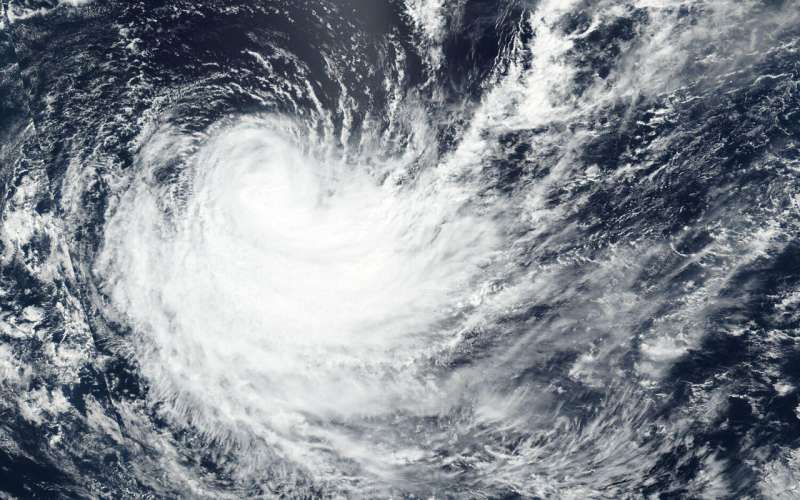Tropical Cyclone Haleh weakening in NASA-NOAA satellite imagery

Tropical Cyclone Haleh continues to weaken while being battered by outside winds. NASA-NOAA's Suomi NPP satellite passed over the Southern Indian Ocean and captured an image the elongated storm.
Wind shear and cooler waters continue to weaken Haleh is it moves on a southerly course. The storm has fallen below the hurricane threshold and is now a tropical storm. On March 7, the Visible Infrared Imaging Radiometer Suite (VIIRS) instrument aboard the Suomi NPP satellite showed Haleh appeared elongated from the outside winds.
In general, wind shear is a measure of how the speed and direction of winds change with altitude. In order to understand how it affects a tropical cyclone or hurricane, think of a tropical cyclone as a vertical rotating cylinder. The different levels of rotating winds in the center of tropical cyclones need to be stacked on top each other for the storm to strengthen. If there are outside winds pushing against the cylinder near the top, it affects the balance of the entire cylinder and that's what happens when vertical wind shear pushes against a storm. It pushes the center and weakens (or wobbles) the rotation of the entire cylinder (storm) and stretches the storm out.
The Joint Typhoon Warning Center or JTWC reported "animated multispectral satellite imagery depicts a 130 nautical-mile cirrus cloud [high clouds] shield [layer] with isolated deep convection [strong storms] that is obscuring the low level circulation center. Low level rain bands are visible beyond the cirrus shield in all quadrants."
At 10 a.m. EDT (1500 UTC) on March 7, JTWC noted that the center of Tropical Cyclone Haleh was located near latitude 27.7 degrees north and longitude 67.0 degrees east. That's about 691 miles northeast of Port Louis, Mauritius. Maximum sustained winds have decreased to 69 mph (60 knots/111 kph).
The storm is forecast to become extra-tropical by March 8. When a storm becomes extra-tropical, it means that a tropical cyclone has lost its "tropical" characteristics. NOAA's National Hurricane Center defines "extra-tropical" as a transition that implies both poleward displacement (meaning it moves toward the north or south pole) of the cyclone and the conversion of the cyclone's primary energy source from the release of latent heat of condensation to baroclinic (the temperature contrast between warm and cold air masses) processes. It is important to note that cyclones can become extratropical and still retain winds of hurricane or tropical storm force.
Provided by NASA's Goddard Space Flight Center




















